Religion
Philipp Veit
1819
Image

Engage with this Source
Creator Bio
Philipp Veit
1793–1877
Philipp Veit was the grandson of the philosopher Moses Mendelssohn and the stepson of the poet and critic Friedrich von Schlegel. He studied with the great romantic painter Caspar David Friedrich in Dresden. Veit converted to Catholicism in 1810 and went on to paint many Christian subjects. From 1815 to 1830, he lived in Rome, where he was a leading figure in the Nazarenes, a group of German romantic painters. From 1830 to 1843, Veit served as director of the Städel Institute in Frankfurt, where he painted the fresco The Introduction of the Arts to Germany through Christianity (1832–1836).
Restricted
Image
Places:
Rome, Papal States (Rome, Italy)
You may also like
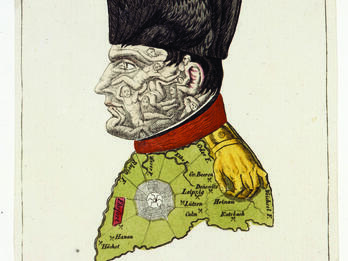
Triumph des Jahres 1813 (Triumph of the Year 1813)
This caricature by the Henschel brothers celebrates the defeat of Napoleon at the Battle of Leipzig in December 1813. This battle, the final in Napoleon’s “German Campaign,” is also known as the…
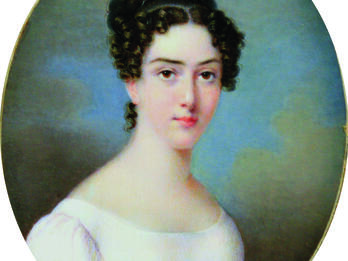
Portrait of a Girl with a Red Belt
Portrait of a Girl with a Red Belt is one of many portrait miniatures that Jeremiah David Alexander Fiorino painted. He was a court painter in Dresden who painted portraits of members of the royal…
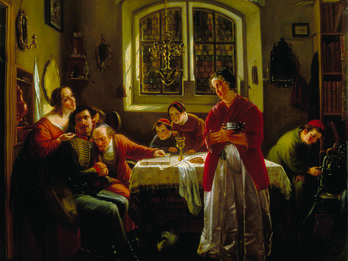
The Return of the Jewish Volunteer from the Wars of Liberation to His Family Still Living in Accordance with Old Customs
This one painting conveys many messages about the benefits of integration and emancipation as well as the inner conflicts they provoked.
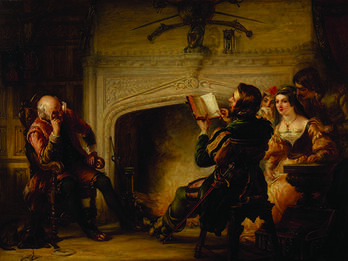
An Early Reading of Shakespeare
Responding to a growing interest in Shakespeare among the English, Hart’s painting imagines what it might have been like to hear Shakespeare’s works read out loud, shortly after they became available…
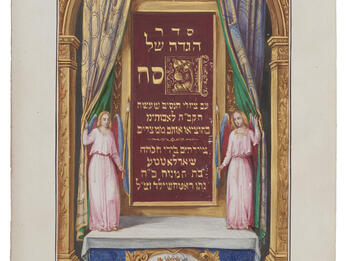
Haggadah (Frankfurt)
One of Charlotte von Rothschild’s most outstanding works is the only known nineteenth-century Hebrew manuscript to have been illuminated by a woman.
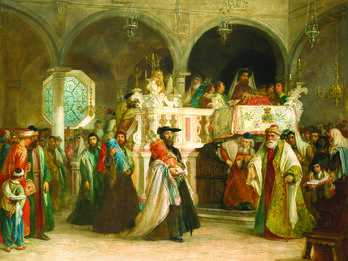
The Feast of the Rejoicing of the Law at the Synagogue in Leghorn, Italy
In the nineteenth century, especially in the era before photography, it was common for artists to travel to exotic or picturesque locations in Europe, North Africa, and the Near East, and to produce…

